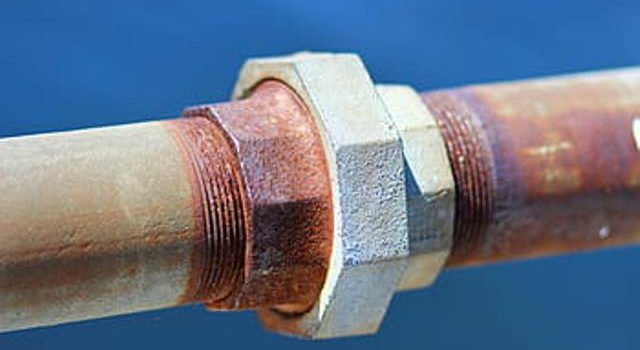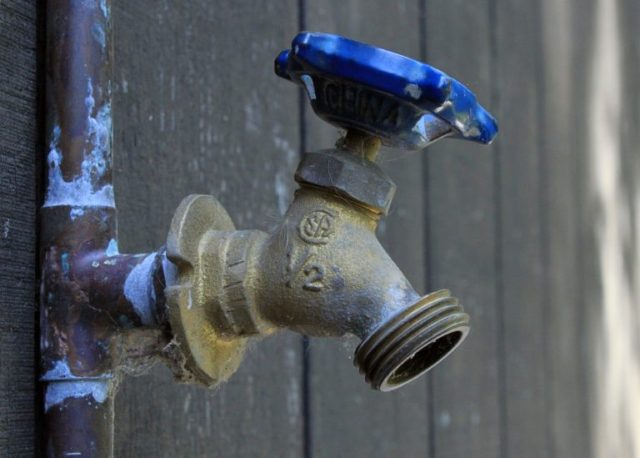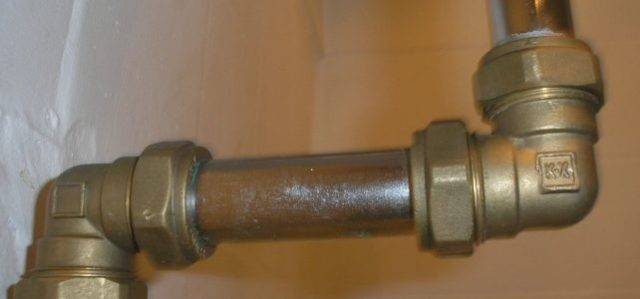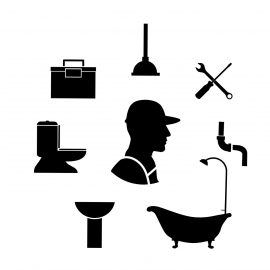
Summary
– Focus on copper pipe leaks
– Step 1: Turn off the water
– Step 2: Strip the copper pipe
– Step 3: Prepare the anti-leakage product
– Step 4: Apply your anti-leak tape or putty to the copper pipe
– Step 5: Check for leaks
Although their life expectancy commonly exceeds several decades, copper pipes can eventually start to leak. Sometimes it is the copper itself that becomes porous, especially in pipes embedded in a slab, but more often than not, it is a weld that “breaks”. Water then beads up at the tube-to-coupler junction and forms a small – or a large – hole in the ground! – puddle.
Here’s how to repair a leak in a copper pipe, using tape or sealant.
Equipment You Will Need to Repair a Leak in a Copper Pipe
– Disposable latex gloves
– Steel wool
– Sealing tape
– Emery cloth
Apart from a direct shock or the effects of frost, the causes of such a leak are difficult to determine:
– poor quality welding;
– assembly faults: stresses induced by the position of the mounting brackets or the (wall) tap ;
– micro-vibrations: they appear each time a tap is opened and closed ;
– ” water hammer “: they resound when you close too quickly a tap located on an installation subject to high pressure.
There are two types of solutions, depending on the size of the leak:
– Seepage or drip: repair with sealant or leak-proof tape. Both are emergency solutions, but they can last long enough to avoid a more serious intervention in the immediate future.
– Small (or large) spray: mastic or tape can again be used successfully, but expect to have to braze a new fitting (after cutting off the water and then the pipe).
Leak-Proof Putty
A leak-proof sealant is a product in which the 2 components (adhesive and hardener) are separated. Presented in solid form (in bars or mini-dose tablets…), they are to be kneaded between your fingers to become usable. Softened by the heat of your fingers, the mixture then becomes almost as hard as copper.
Leak-Proof Tape
Leak-proofing tape is similar to black electrician’s tape, but unlike the latter, it is self-amalgamating: once wrapped around the pipe, it partially melts on itself to form a kind of watertight sleeve.
1) Turn off the water

Even if the leak is not very big, always turn off the water in the circuit or just after the meter. This makes the following operations easier and increases their chances of success.
2) Strip the copper pipe
Regardless of the product to be applied (putty or tape), dry the area with a cloth and then strip it with emery cloth or fine steel wool.
3) Prepare the anti-leakage product

– With ribbon
If you choose the ribbon, skip the step below (with putty).
– With putty
If the putty comes in a bar, cut a small slice. Then remove its protection and knead the product between your fingers.
If the putty is sold in mini-dose tablets, remove the protection from one of them and knead the halves between your fingers.
Note: In both cases, the putty will gradually form a ball of uniform colour and become sticky. This is why it is preferable to wear disposable gloves.
4) Apply your anti-leak tape or putty to the copper pipe
– With ribbon
Wrap the ribbon on itself around the pipe. Overlap it 50% of its width at each turn.
Note: the sleeve formed in this way must extend at least 1 to 2 cm on either side of the leak.
– With putty
Place the pellet of putty right where the leak is.
Flatten the product to make it adhere well to the pipe.
Then allow it to dry for half-hour or more (depending on the instructions in the package insert and the ambient temperature).
If you did not wear gloves, wash your hands.
5) Check for the leaks

– Reopen the shut-off valve to inspect the repair.
– If water beads on the edges of the putty or the ends of the tape, turn off the water, remove the product (scrape it off with an old knife) and start again.
– This time try to better strip the pipe and cover a larger area with the product.
– If the leak persists, another fitting will have to be soldered or the damaged portion of the pipe will have to be replaced.
Finally, if the above appears a little bit complicated, you can get in touch with Schmidt Plumbing in Melbourne South Eastern Suburbs, Croydon South and Glen Waverley. They will assist with all your residential plumbing projects, be it for gas fitting, leaking and burst pipe repairs, bathroom renovations, heating and cooling systems – installation, maintenance and repairs, and hot water system services.
For more information and tips, please do not forget to jot down your comments and share your experience in the section below.



